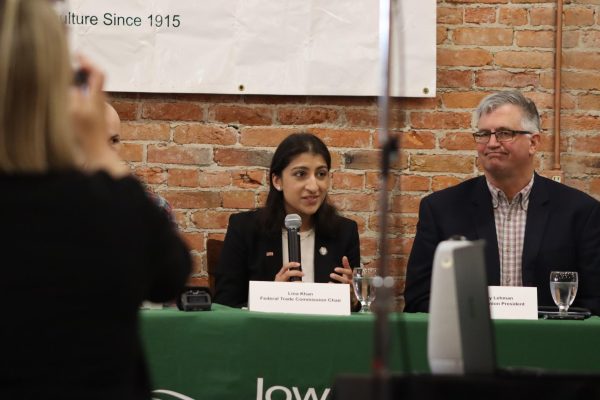ISU professors address feeding a growing population
March 9, 2016
As the population continues to rise, the question begging to be answered is how exactly can the world feed an estimated 2 billion more people by 2050?
Matthew O’Neal, program chair of the Sustainable Agriculture Graduate Program, suggests that it is possible to feed the world with the food resources that we already have.
“My understanding from talking to sociologists and economists, is that we produce enough food, but it’s an issue of distribution,” O’Neal said. “Going forward, I think we’re going to not only need to produce more food but do it in a way that makes sure that it’s equally distributed.”
O’Neal added that humans must progress in feeding the growing population while trying to avoid degrading our environment.
By growing more food, O’Neal said there’s potential for a negative impact on our environment, so people must look into more environmentally friendly methods of agriculture.
Laura Merrick, crop genetic research specialist and lecturer in agronomy, also agrees that distribution plays a major role in helping feed the increasing population.
“In terms of world food production, the data shows that on average, the world produces more than enough food to adequately feed everyone, but distribution inequities are really important things to be aware of,” Merrick said.
O’Neal states that one of the bigger issues that needs to be addressed is availability of water for a growing population.
“Water use is going to restrict what we can grow,” O’Neal said.
O’Neal regards places that are experiencing extreme droughts, such as California, as showing a decline in the amount of water intensive crops they are able to grow and the amount of cattle it can export out of the state.
O’Neal also sees a greater need for local production of food, which would provide people with access to food more readily. A process like this would also lower the carbon footprint associated with production and distribution of food.
Solutions such as the 100-Mile Diet, a diet that consists of eating only foods grown within 100 miles of a person’s residence, may become more attractive considering that it can help with decreasing carbon emissions and increasing the availability of food for a larger population.
Merrick also sees having a change in diet as a possible tactic to provide food for a growing population.
“In terms of energy efficiency and effect on greenhouse gases and global warming, there are numerous arguments made against heavy reliance on consumption of meat,” Merrick said. “There are a lot of arguments for why an increase of reliance on meat consumption may be linked with setting ourselves up for future continuing problems with ability to feed the world.”
Merrick acknowledges the fact that anywhere from 30 to 40 percent of food that is produced is wasted in post-harvest and post-consumer ways. In more industrialized and developed countries, things such as portion size at restaurants play a role in the amount of food wasted.
The way individuals and families handle food in their homes is also a factor, Merrick added. Some people throw away food prematurely because of misinterpreted expiration dates or throw away uneaten food that has expired.
Merrick suggests using places like food pantries and soup kitchens to combat the waste of food.
She sees the issue of feeding a growing population as reliant on a multitude of different strategies, including distribution, change in diets and decrease in food waste.
Through the Sustainable Agriculture Graduate Program at Iowa State, issues such as feeding a growing population are taken into consideration.
“[The graduate program] is a really diverse program primarily housed in the College of Agriculture, but it includes participation from Liberal Arts and Sciences, College of Engineering and College of Design,” O’Neal said.
The program focuses on satisfying the food and income requirements of farmers, providing people with a healthy and affordable diet, protecting environmental quality and human health and contributing to the vitality of rural and urban communities.
















